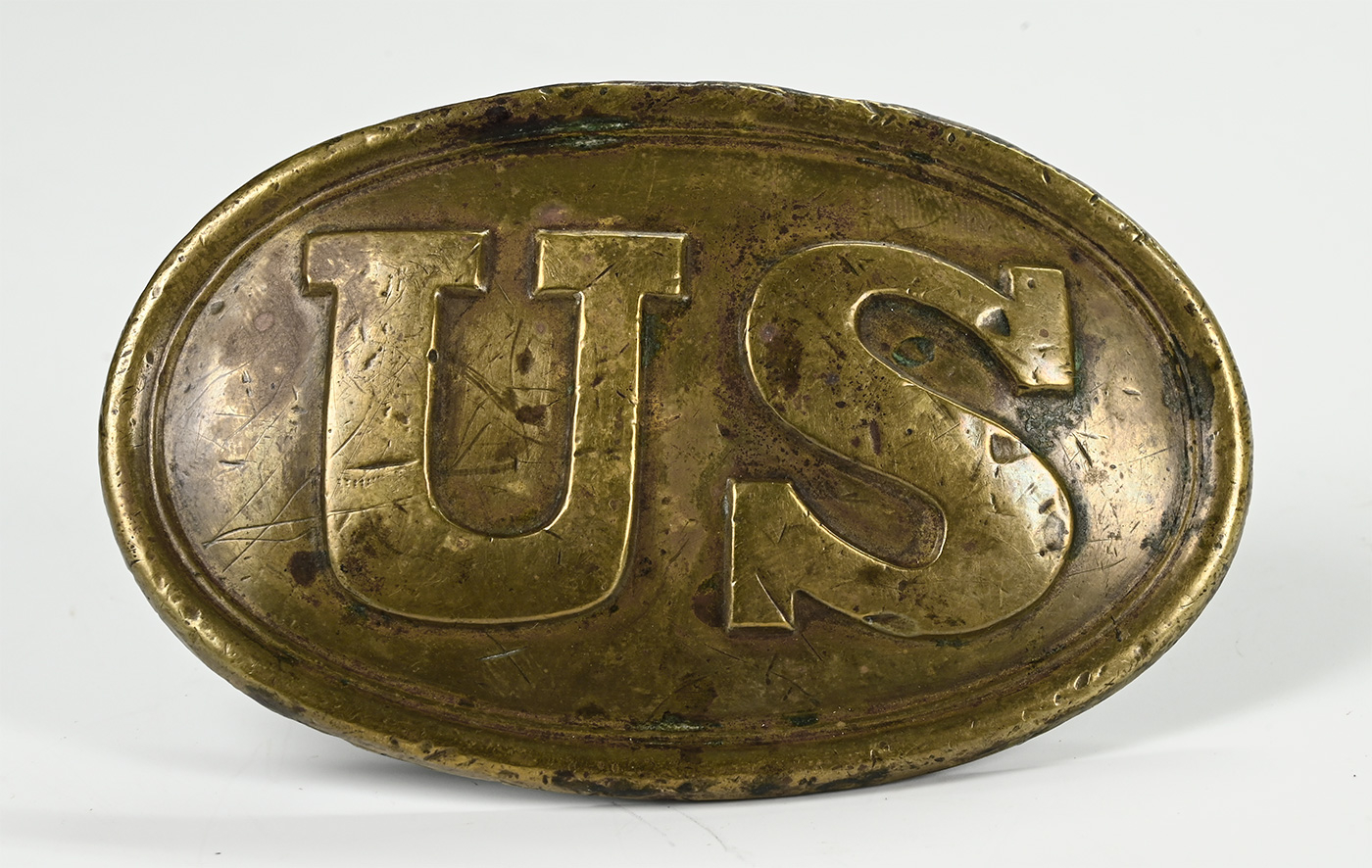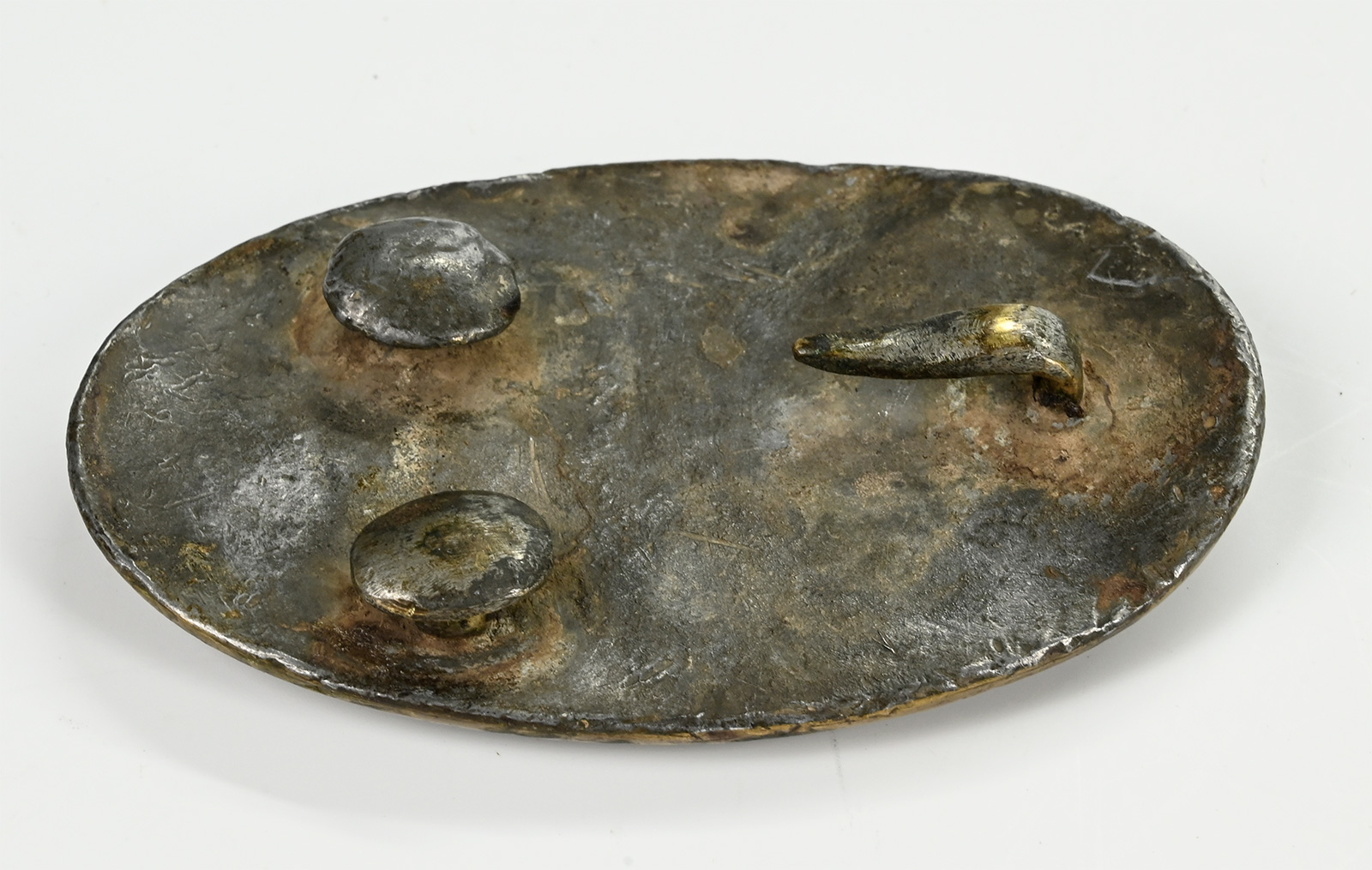site search
online catalog
OVAL US DRAGOON STYLE BELT PLATE

Hover to zoom


$450.00 SOLD
Quantity Available: None
Item Code: 1156-09
Introduced in 1839, these plates are stamped rolled brass with a lead-solder filled back securing the belt hooks and were initially issued to both foot troops and dragoons with differences over the years in size and style of fastening hooks. The difference between the dragoon and infantry patterns is the placement of the studs so as to be on the wearer’s left as he fastens the belt, i.e. under the “S.” This allowed for adjustment over the loose belt end on his right. This was necessary because the saber was carried on the left and its slings were fastened to brass loops on the left side of the belt, which were in turn secured by chapes of leather doubled over and sewn to the belt, making it impractical to place adjustment holes on that side or think of fastening the buckle over the chapes securing the forward sling. The 1851 pattern sword belt and plate, of course, took its place and by 1857 the distinction in placement of the studs was no longer observed in the plates issued to infantry and other foot troops.
This is non-excavated example with a mellow patina and some age stains and dings from use, but with a nice rim and full, level back with studs and hook in place. [sr] [PH:m]
~~~~~~~~~~~~~~~~~~~~~~~~~~~~~~~~~~~
THIS ITEM, AS WITH ALL OTHER ITEMS AVAILABLE ON OUR WEB SITE,
MAY BE PURCHASED THROUGH OUR LAYAWAY PROGRAM.
CLICK HERE FOR OUR POLICIES AND TERMS.
THANK YOU!
Inquire About OVAL US DRAGOON STYLE BELT PLATE
Most Popular
Historical Firearms Stolen From The National Civil War Museum In Harrisburg, Pa »
Theft From Gravesite Of Gen. John Reynolds »
Selection Of Unframed Prints By Don Troiani »
Fine Condition Brass Infantry Bugle Insignia »
Large English Bowie Knife With Sheath 1870’S – 1880’S »
Imported (Clauberg) Us Model 1860 Light Cavalry Officer's Saber »
featured item
CONFEDERATE CLIP POINT BOWIE WITH SALVAGED MUSICIAN SWORD BRASS HILT
This clip-point Bowie a great example of southern improvisation- a kind of weapons-making version of folk art – not sophisticated, but with an appeal of it own. Measuring 19.5 inches overall, the knife has a 13.25 inch blade that is 1.5 inches… (490-3265). Learn More »


